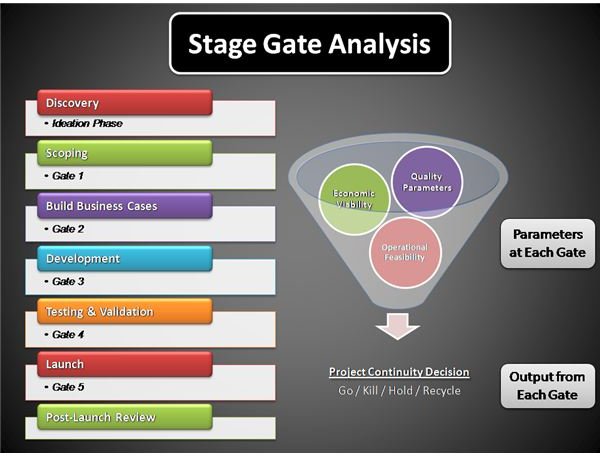Stage Gate Analysis: What is It? How Can It Be Applied in Projects?
History
Stage gate analysis is a technique that’s used in new product development and processes in which decisions regarding the continuity of product development are taken at certain decision points termed “gates” between the various “stages” of the process – hence, the term Stage Gate Analysis.
This method was first mentioned by Professor Robert G. Cooper in his book on new product development. The basic rationale behind the Stage Gate Analysis is given below:
All the new products developed by an organization may or may not be profitable. Hence, companies need to make intelligent decisions on which avenues to pursue and which dead-ends to write-off before investing too much money into the dead-ends.
A Review of the Stages
The various stages given in the conventional model are
- Scoping (Preliminary Analysis Phase)
- Build Business Case
- Development
- Testing and Validation
- Launch
There are 5 stages and normally a gate after every stage. There is also a zeroth stage called Discovery (Ideation Phase) and a 6th stage called a Post-Launch Review.
Factors Influencing the Decisions at the Gates
- Quality Parameters - This refers to how well the project is being executed.
- Business Sense / Economic Viability - This refers to the financial attractiveness of the project. Key metrics used are evaluating the ROI (return on investment) and the NPV (net present value) of the project in order to determine attractiveness.
- Operational Feasibility - This refers to whether the resources are available, whether the project can be completed on time, whether any additional capability is required, etc.
Please refer to this detailed approach on conducting a feasibility study for further information.
In order to evaluate the above, this is what you need to know:
- Deliverables - These describe the expected or ideal outcomes of the project in order to go ahead with it.
- Evaluation Criteria - These describe the various critiera / parameters for evaluation of the project.
- Outputs - These are the outputs that are obtained as a result of this evaluation.
Potential Outcomes at Each Gate
The potential outcomes at each gate are normally common across gates and are described below.
- Go Ahead - This is equivalent to the Green Signal, meaning that we can Go ahead to the next stage of the new product development / process / project.
- Kill the Project - This is equivalent to the Red Signal, essentially signifying the termination of the new product development / process / project.
- Hold On- This is equivalent to an Amber Signal, meaning Wait and Watch before taking a decision.
- Recycle - This could mean reverting back to the start of that stage or an earlier stage in order to repeat or review the process.
Project Planning Tools: Stage Gate Analysis
A pictorial view of the steps involved in Stage Gate Analysis is described below. It has traditionally been utilized as one of the project planning tools for new product development.
